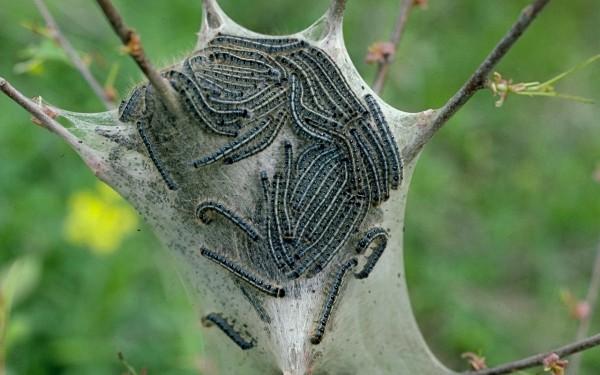About caterpillars
- Many caterpillars feed on the leaves of shade trees throughout the season. Most do not cause significant damage, and they provide an essential food source for birds.
- Gypsy moth is an early season caterpillar that should be controlled on oaks.
- Other early season caterpillars include Eastern tent caterpillar and cankerworms.
- Mid-to-late season caterpillars such as bagworm, fall webworm, red-humped, yellow-necked, mimosa webworm, greenstriped mapleworm (rosy maple moth), catalpa worm, and orange striped oakworm caterpillars generally do not require control except on young trees or if heavy defoliation is occurring.
- Bagworms should be controlled on evergreens. Pick off and destroy the bags during the winter. If needed, spray affected trees with Bt (Bacillus thuringiensis) in June into early July when the bags are small.


Management

- Early season caterpillars such as gypsy moth should be controlled when larvae are small and before the damage becomes extensive.
- The biological insecticide Bacillus thuringiensis (Bt) is effective only on small caterpillars.
- Hand-picking of caterpillars can give adequate control of small populations on young trees.
- Large caterpillars are difficult to control and may require a residual insecticide spray if populations are causing significant damage.
- Control may be difficult on large trees unless spray coverage is thorough. Contact a certified arborist for spraying large, mature trees.
Rev. 2020
